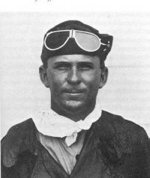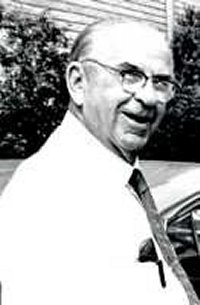
|
|
TEX MARSHALL – ONE OF THE BEST
by Nancy Allison Wright
Not only a superb pilot, Tex Marshall was a prolific and expressive wordsmith. He wrote letters to friends, composed articles for aviation magazines, kept notes of his flying experiences, and referring to these notes, dictated a memoir of his life in aviation. From his jottings, both casual and professional, he grants us a rare look at the thrilling world of early aviation; we see its comical moments, its lofty goals and its tragic losses. Tex was one of aviation history’s very early ones. In 1914, he enrolled in the Texas School of Aviation in Dallas, Texas. There he learned to fly on a Curtiss Pusher. An exemplary student, he was able to get the little craft, with its 60-hp Emerson two cycle, water-cooled motor, off the ground and actually fly it for 300 or so feet without crashing. Later he distinguished himself by nearly making a complete circle of the school airfield in a tractor plane with a 60 hp Maximotor, L head type, water-cooled engine. These successes were followed by occasional mishaps, but combined they fired in him a love of flying that endured his entire life. Once trained, Tex secured employment with Thomas-Morse Aircraft Co. of Ithaca, first cutting bull rushes for the runway then graduating to flight testing. Eventually, he became the company’s number one test pilot, checking out the company’s new plane, the Scout with its 100 hp Gnome rotary motor, and performing aerobatics on it. He also demonstrated planes for the Air Corps, pioneered cross country runs, and inaugurated such new TM models, as the D-5, a two-seater biplane.
In 1919, he left Ithaca and launched himself into the world of barnstorming. After the war the Signal Corps was selling surplus Curtiss Jennies, JN-4-Ds, with their OX-5 motor, for a song, and Tex, believed the lyrics spelled money and bought one. With it, he and his wife, Katherine, drove to Sea Breeze, Florida, to put it to work. In one day alone he made $700. But Tex readily understood that his barnstorming days were numbered; he realized he couldn’t make an adequate living taking farmers and their wives up for thrilling circles of their corn field. Late one afternoon, as a storm was coming, he looked up in the sky and saw a biplane with the words Aerial Mail painted on his fuselage. As he described the experience, "... the plane sailed by me steadily and unswervingly headed straight into the center of that black cloud to the west. "I stood entranced; how could any pilot, no matter what he was paid, fly into a storm like that? As the plane dwindled into a small dot in the center of the black clouds, a great flash of lightning seemed to encompass it, and the plane was gone. I stood wondering to myself what could make a pilot do that. ...I decided he must be dedicated to the idea of flying the mail, no matter the cost. And then and there I decided I’d join this small band of fellows and find out about the Aerial Mail." Tex signed up with the U.S. Air Mail Service on September 21, 1920, and stayed with them, flying the mail through sleet or hail for seven years. During that time he totaled 329,152 miles in 3675.08 hours. His routes included Chicago-Omaha, Chicago-Cleveland, Omaha-Cheyenne and Reno-Salt Lake City-San Francisco. At first, he flew no more than 200 or so feet above the ground, navigating by landmarks. "I found it was better to fly as close to the ground as possible," he wrote in his memoir. "We were able to maintain the schedules about 90 percent because we hugged the ground en route." Despite his love for flying close to the ground, Tex experimented with instrument flying. He was one of the first airmail pilots to trust the new turn-and-bank indicators. In 1922, he helped form the Air Mail Pilots Association and served as its president and vice president. With the Post Office Department contracting airmail routes to private carriers, most airmail pilots signed on with either Boeing Air Transport or National Air Transport. Not Tex. From July 1927 on, he never flew a plane for anyone else but himself. Instead, he became an executive of air transport companies, including American Airways.
Tex’s life in aviation is best summed up by his own nostalgic words: "Today I flew my Apache twin engine plane and thoroughly enjoyed it. But got to thinking of those days long ago when, to fly meant dressing up in a helmet and goggles, and warm clothes, and the smell of castor oil, and the beautiful hum of the rotary motor, that I’ll never hear again..." Photo courtesy Ann Marshall
|
History |
Air Mail Pilots
|
Photo
Gallery |
Flight Info
|
Antique Airplanes
|
Members |
|
copyright © 1999 Nancy Allison Wright, President Air Mail Pioneers
|


